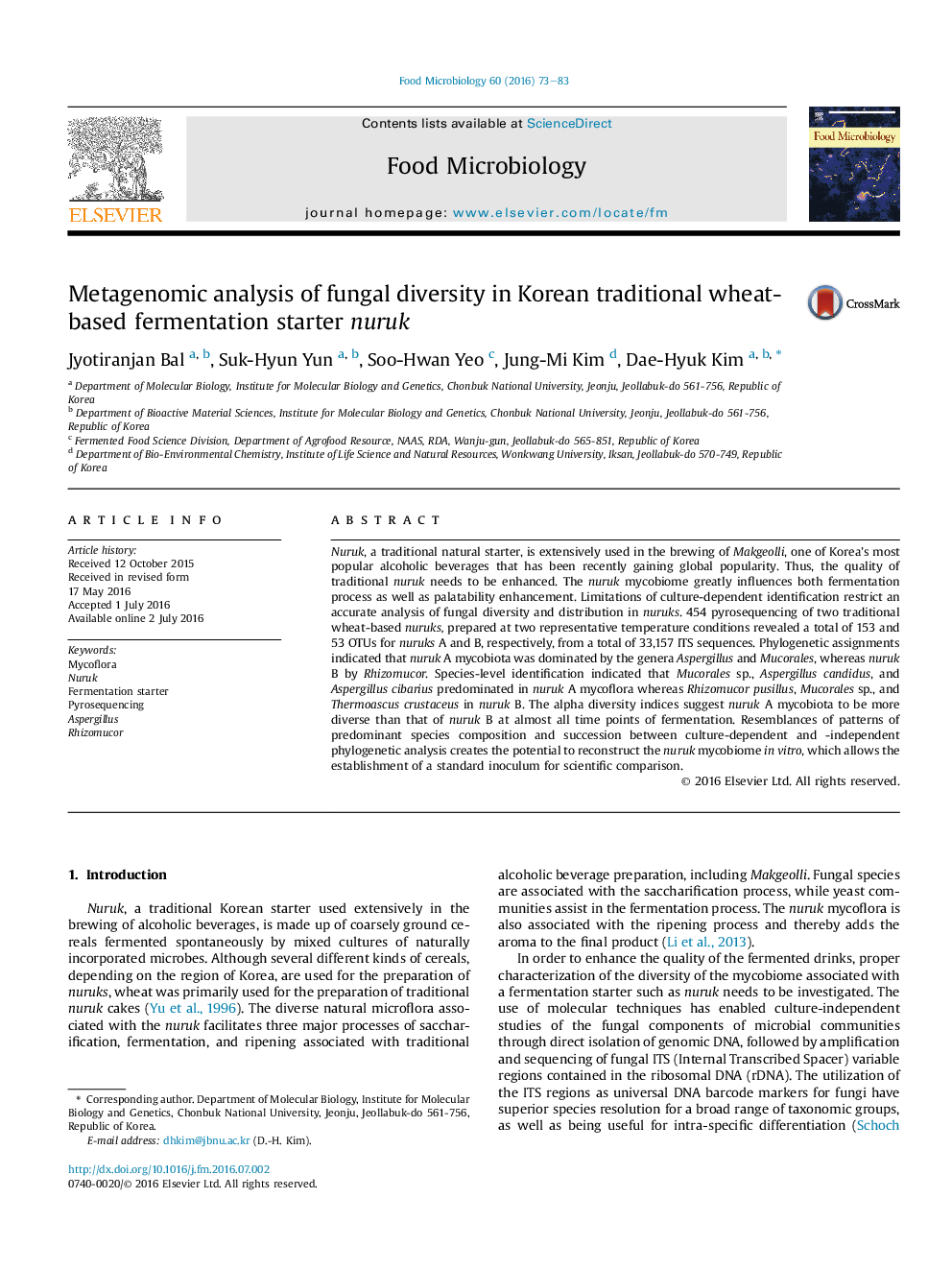| کد مقاله | کد نشریه | سال انتشار | مقاله انگلیسی | نسخه تمام متن |
|---|---|---|---|---|
| 6288347 | 1616241 | 2016 | 11 صفحه PDF | دانلود رایگان |

- Comprehensive evaluation of fungal diversity in Korean traditional fermentation starter nuruk.
- A large shift in mycofloral community with the progress of nuruk fermentation.
- Fermentation-specific mycofloral succession during nuruk fermentation process.
- Resemblance of species composition and succession between culture-dependent and -independent phylogenetic analysis.
- Initial fermentation temperature greatly influences mycofloral composition in nuruk.
Nuruk, a traditional natural starter, is extensively used in the brewing of Makgeolli, one of Korea's most popular alcoholic beverages that has been recently gaining global popularity. Thus, the quality of traditional nuruk needs to be enhanced. The nuruk mycobiome greatly influences both fermentation process as well as palatability enhancement. Limitations of culture-dependent identification restrict an accurate analysis of fungal diversity and distribution in nuruks. 454 pyrosequencing of two traditional wheat-based nuruks, prepared at two representative temperature conditions revealed a total of 153 and 53 OTUs for nuruks A and B, respectively, from a total of 33,157 ITS sequences. Phylogenetic assignments indicated that nuruk A mycobiota was dominated by the genera Aspergillus and Mucorales, whereas nuruk B by Rhizomucor. Species-level identification indicated that Mucorales sp., Aspergillus candidus, and Aspergillus cibarius predominated in nuruk A mycoflora whereas Rhizomucor pusillus, Mucorales sp., and Thermoascus crustaceus in nuruk B. The alpha diversity indices suggest nuruk A mycobiota to be more diverse than that of nuruk B at almost all time points of fermentation. Resemblances of patterns of predominant species composition and succession between culture-dependent and -independent phylogenetic analysis creates the potential to reconstruct the nuruk mycobiome in vitro, which allows the establishment of a standard inoculum for scientific comparison.
Journal: Food Microbiology - Volume 60, December 2016, Pages 73-83